Статьи журнала - Arctic and North
Все статьи: 955
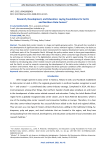
Research, development, and education: laying foundations for Arctic and Northern data centers
Статья научная
The global data center industry is a huge and rapidly growing sector. This growth has resulted in the development of significant data center clusters in various northern regions. Furthermore, the desire to attract new data center investments has been incorporated into regional development plans and strategies in different parts of the Circumpolar North. Although the policy-makers seem to have great expectations, they and the general public often know little about the industry, which consumes huge amounts of electricity and plays an immense role in the digitalization process that the world is experiencing. This article attempts to increase awareness, knowledge, and understanding of these matters among all relevant stakeholders by introducing data center-related research and development activities and education in the Arctic and the North, as well as research concerning the development of the data center industry in the cold, northern environment. After all, it is often argued that these particular conditions offer advantageous circumstances for the construction of environmentally friendly and sustainable data centers.
Бесплатно
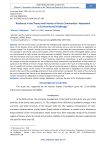
Resilience in the Theory and Practice of Arctic Communities’ Adaptation to Environmental Challenges
Статья научная
The aim of this study is to describe the individual and collective characteristics of the rural population of the Russian Arctic, which determine their vital activity and are internal factors of adaptation to climate change. The scientific novelty of the study consists in describing the phenomenon of resilience on the example of island and coastal communities of the Primorskiy district of the Arkhangelsk Oblast, which are characterized by high natural and socio-economic instability. Based on the empirical data, it is shown that the territorial and socio-cultural integrity of the living space of local communities, the integrality of self-existence and self-consciousness of local residents, cooperative coexistence, as well as proactivity of life support create the foundation for the resilience of local communities and contribute to their social adaptation to the effects of climate change. Particular attention is paid to the issue of understanding the culture of mobility of northern communities in the face of increasing cases of adverse weather events due to climate change. Based on the results of an empirical study, an approach to adaptation to climate change based on the use of the knowledge potential of local communities is proposed. The results of the study can be used to develop the theory of the development of the North of Russia, as well as the development of specific measures for adaptation to climate change at the local level.
Бесплатно
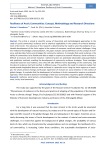
Resilience of Arctic Communities: Concept, Methodology and Research Directions
Статья научная
This article is aimed at scientific review of theoretical and methodological approaches to the study of social (community) resilience and its empirical applicability in the context of territorial development of the Arctic. The relevance of this research is determined by the need to solve the problems of sustainable development of the Arctic region in the context of economic, social and natural challenges. Using the method of knowledge contextualization, the paper analyses various definitions of the concept of resilience, and describes factors and strategies for community resilience. It concludes that social resilience is the ability of communities to be flexible and able to adapt in response to external influences. Social resilience is difficult to measure and control; however, resilience factors are potentially observable using quantitative and qualitative methods, enabling the development of community resilience strategies. These strategies should be based on local realities, since they will take different forms depending on the community, and the idea of resilience itself will manifest in different ways. This justifies the need for empirical studies that would provide longitudinal data on social resilience in a particular area. Using the Arctic region as an example, the article presents foreign and Russian experience of research on social resilience in the context of global changes. It concludes that the development of resilience in Arctic communities requires a systematic approach, which should be based on knowledge of how local communities respond to global challenges.
Бесплатно
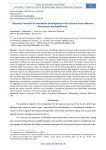
Статья научная
The aim of the work is to determine a scientifically based assessment of the resource potential of the Arctic industry, which determines the possibility of transition the economy to an innovation type of development, taking into account its specific features. The considered scientific works of foreign and domestic scientists made it possible to determine the methodology for rational assessment of the resource potential of the industry of the Arctic territories. The study was performed on the basis of production, technical, investment, staffing and innovation development indicators for 2013–2019. The study showed that in terms of production and technical indicators the Arctic regions generally have an average level of resource potential while the maximum values are typical for the Nenets and Yamalo-Nenets Autonomous Okrugs. In terms of investment indicators, the Arctic regions are characterized by high potential. In terms of staffing, the Arctic regions are characterized by low potential while Murmansk Oblast demonstrated effective personnel policy. Innovation development indicators of the Nenets Autonomous Okrug and the Murmansk Oblast are lower than in the Chukotka and Yamalo-Nenets Autonomous Okrugs. The Arctic regions are characterized by the differentiation of indicators of resource provision of economic development associated with differences in production, investment, personnel and innovation spheres. The study showed that the highest aggregate resource potential for innovation development is typical for the Yamalo-Nenets Autonomous Okrug while the lowest one is typical for the Chukotka Autonomous Okrug and the Murmansk Oblast. Proposals for further scientific research in the direction of enhancing innovation and accordingly increasing socio-economic indicators of the Arctic regions were developed.
Бесплатно
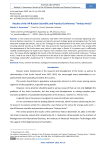
Results of the All-Russian Scientific and Practical Conference “Yenisey Arctic”
Статья научная
In the context of economic turbulence and within the framework of constantly tightening sanctions by Western countries, it is necessary to take into account strategic goals and emerging risks. The most important strategic documents, such as the "Strategy for the development of the Arctic zone of Russia and ensuring national security up to 2035” take into account the macroeconomic and other risks arising while the development of the Arctic water area, which is quite large in Russia. If its western part is sufficiently studied and developed, the eastern part requires more attention from researchers, government and business. The review briefly highlights the results of the All-Russian scientific and practical conference “Yenisey Arctic”, held at the end of 2022 in Krasnoyarsk on the basis of the Siberian State University of Science and Technology named after Academician M. F. Reshetnev with the support of the Regional Science Foundation.
Бесплатно

Review of Scientific Publications on the Study of Population Migration in the Russian A
Статья научная
The purpose of the article is to conduct a quantitative and qualitative analysis of Russian-language publications on the topic of population migration in the Arctic zone of Russia. The national bibliographic database of scientific citation hosted on the eLIBRARY.RU platform was used as a source of information. The research methodology is based on the use of structural-semantic analysis of texts in combination with general scientific methods (analysis, generalization and systematization). The time period of 2010-2022 is characterized by an increase in the number of publications on migration issues in the Arctic zone of Russia, which was most clearly manifested during the adoption of Russia’s Arctic strategies. During the period under review, Russian authors prepared about 300 articles on the study of population migration in the Russian Arctic. However, the number of researchers who regularly publish papers on this topic is small. The analysis made it possible to identify an objective list of authors groups (scientific schools) that are leading in terms of the number of publications in this subject area. The main directions of the population migrations study in the Russian Arctic zone are considered according to six key scientific schools, general and special approaches of the authors to the study of Arctic migrations are highlighted. The study results will be useful and interesting to scientists, whose research area is related to population migration, including in the Russiaт Arctic regions; specialists dealing with social issues of the development of the Arctic territories; postgraduates and students involved in this field.
Бесплатно
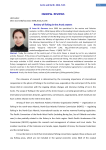
Review of fishing in the Arctic waters
Статья научная
Today the enclave of the central part of the Arctic Ocean is closed by ice for any industrial activity. However, if the process of warming goes on, countries will have a real prospect for development of large-scale economic activities in the area, including commercial fishing. The article offers cross-section of the major activities in 2015 aimed at the establishment of an international multilateral convention on fishery management and scientific fishery research in the Arctic region. The cooperation of the Arctic Council countries in the field of fisheries in the framework of international agreements is considered, as well as the species composition of fish of the Arctic seas is given.
Бесплатно
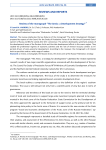
Review of the monograph “The Arctic: a Development Strategy”
Статья научная
The review emphasizes the key features of the monograph “The Arctic: Development Strategy”, prepared by experts of the Council for the Study of Productive Forces of the Ministry of Economic Development of Russia and NArFU named after M.V. Lomonosov. The authors developed a systematic analysis of the development issues of the Russian Arctic and the state development efforts in this macro-region. They studied the preferential regimes of economic activities and the role of mineral resource centers as important drivers of socio-economic development. According to the reviewer, the monograph is of interest both to specialists and to a wide range of readers.
Бесплатно
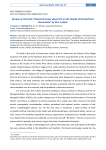
Статья научная
The book is the result of a great work of M. A. Lukina on the history of villages in the Delta of the Northern Dvina River. The book is the first study of the island colonization, establishment, and centuries-old development of settlements in the mouth of the Northern Dvina River. The author combined the traditional historical approach to the data presentation and the method associated with the study of the value change over the centuries and historical memory.
Бесплатно
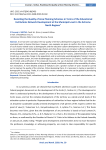
Статья научная
A lot has been said about the low quality of territory development programs at the regional and municipal levels in Russian literature. However, rare examples are given to confirm this thesis. In the case of such closely related issues as demographic and the education system development at the municipal level, we consider the territorial planning schemes and show these issues are not given sufficient attention. In terms of demography, the main disadvantages are an insufficiently detailed analysis of the age distribution of the population and its dynamics, analysis of a very short period (1-4 years), underestimation of existing trends (e.g., a wave-like change in the population), and an extremely weak demographic forecast. Concerning the education system, the main disadvantages are a short review horizon (1-3 years), insufficient analysis of trends and justification of the proposed measures, the use of planned rather than real indicators, which leads to an underestimation of demographic trends, insufficient analysis of the accessibility of educational organizations. A more detailed analysis of indicators over a greater number of years should be carried out to improve the quality of the schemes. When developing them, it is necessary to involve a specialist in demographic forecasting. Finally, it is required to create a model scheme that can be guided by developing schemes at the municipal level.
Бесплатно
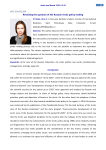
Revisiting the question of the Russian Arctic policy making
Статья научная
The author discusses the main stages and key documents that have established the Russian Arctic zone as an independent object of the state policy and analyses current issues of the Russian Arctic policy making. It was decided to avoid the clear separation of stages in the policy making process due to the fact that it was not possible to determine the equivalent differentiation criteria. The chosen approach has allowed to achieve certain goals and to draw conclusions about the dynamics of the Russian Arctic policy making, its key points, the meaning and significance of adopted legal acts.
Бесплатно
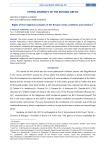
Rights of the indigenous peoples of the Russian Arctic: problems and solutions
Статья научная
The article reveals the situation of the indigenous small-numbered peoples of the North of the Russian Federation; it draws attention to the unresolved issues of the collective rights of the indigenous peoples, legal aspects of their ethnicity, public health, and reindeer husbandry, industrial development of the territories, education and language. The author has noted activities of the Russian Association of Indigenous Peoples of the North, Siberia and the Far East. In conclusion, the author states that despite the exist-ing shortcomings because of the self-sufficient public-state and ethnic policy, in the Russian Arctic, there is an ongoing system of ensuring rights of indigenous small-numbered peoples, their traditional way of life and economic activities.
Бесплатно
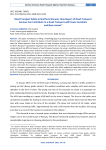
Статья научная
This paper contributes to filling a knowledge gap by presenting new research within the practical field of road transport. It takes the buyers of road transport services as its point of entry and seeks to answer the follow question: How can buyers of road transport services contribute to safe road transport in northern Norway? A qualitative approach was selected for this study, and semi-structured interviews were conducted with six different buyers of road transport services. By using a modified version of The Pentagon Model, different aspects were analyzed in order to identify organizational characteristics and qualities that will improve the possibility for buyers of road transport to contribute to a safer road transport in Northern Norway and thereby contribute to fewer accidents and near-misses. The following characteristics and qualities were identified: 1) the importance of developing a detailed formal contract with the provider of road transport; 2) being aware of the possibilities with new technologies; 3) understanding that the decision criteria for ordering transport can influence road transport safety; 4) seeing the importance of good communication with both the transport organization and the authorities; 5) recognizing that knowledge of and trust in a transport organization is important but could also affect judgement regarding revisions and controls. This study suggests that buyers of road transport services can contribute to a safer road transport in northern Norway by emphasizing these five characteristics and qualities.
Бесплатно
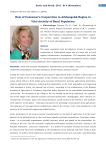
Role of Consumer’s Cooperation in Arkhangelsk Region in Vital Activity of Rural Population
Статья научная
The paper examined main development trends of consumer’s cooperation in Arkhangelsk region and it’s main role in rural regions infrastructure development. The emphasis was made on the social aspects of consumer’s cooperation activity: supply of goods and services to rural population, their employment and income increase.
Бесплатно

Статья научная
During the period of global climate change, the territories of the Russian Federation, within which permafrost is widespread, are at particular risk. The aim of this article is to identify the social consequences of permafrost degradation on the example of a number of rural settlements in the Republic of Sakha (Yakutia) and to determine the emerging mechanisms of adaptation to the challenges associated with changes in the habitual state of the environment. In this regard, for the first time, the villages of Amga, Yunkur, Argakhtakh, Lippe-Atakh and Ulakhan-An, located in Yakutia, were the focus of relevant interdisciplinary research conducted during 2019–2022. The work in these settlements made it possible to establish local features of both the consequences of the degradation of permafrost and the specifics of their perception by the local population. It is noted that in the rural settlements studied, permafrost degradation limits the development of traditional economic activities, including among the Arctic and Subarctic indigenous population, limits the possibilities for the spatial development of settlements, leads to problems with the safety of the housing stock, and hinders transport communication. The observed changes entail an increase in the financial burden on the population, economic entities and local administrations, and negatively affect the social well-being of the inhabitants of the studied villages. At the same time, the conducted research allowed to reveal that the mechanisms of adaptation and sustainability of rural communities that are being formed in this regard are largely based on traditions of rural mutual assistance.
Бесплатно
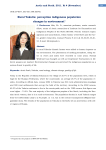
Rural Yakutia: perception indigenous population сhanges in enviroment
Статья научная
In rural Yakutia climatic factors were added to human impacts on the environment. The phenomena of melting permafrost, rising water in rivers and lakes were recorded in rural areas. Normal Windrose has changed as well as temperature fluctuations in different seasons are marked. Environmental changes are perceived the indigenous population as a serious threat to quality of life.
Бесплатно
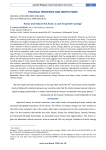
Russia and India in the Arctic: a case for greater synergy
Статья научная
The article studies the cooperation between Russia and India with specific reference to the Arctic region. The melting of the Arctic sea ice has seen tremendous investment by Russia in the Arctic. It has sought strategic partners for the development of the Arctic, with the primary focus being on the development of the oil and gas industry and the Northern Sea Route. Russia and India have had long-standing diplomatic relations. It has been in diverse spheres such as space, atomic energy, defense, oil and gas, diamond industry, steel industry being just a few ones. Russia’s focus on the Arctic ushers in many more opportunities for Russia and India to cooperate. India is one of the few countries to which Russia has accorded many investment opportunities in oil and gas and the diamond industry. India has made some investments in the oil and gas industry of the Russian Arctic. However, the article highlights that the energy deficit in India is dangerous, and it affects the development of the country. The article suggests more significant Indian investment in the Arctic, including phase II of the Yamal LNG project. It brings out a need for greater cooperation in scientific research, specifically climate change and hydrography, and possible utilization of the immense technically qualified human resource that India has in diverse areas of the Arctic. It is relevant for diplomats, civil servants, oil and gas companies, strategic mineral companies, hydrographic authorities, and researchers in both countries involved in developing the Arctic and the Northern Sea Route. The article may be of interest for relevant courses and programs at universities.
Бесплатно
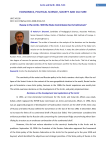
Russia in the Arctic. Will the State Commission be its helmsman?
Статья научная
The article is focused on the analysis of the decisions on the development and exploration of the Arctic. It also reveals the activity of the State Commission on the Development of the Arctic. It notes the slow solution of problems of energy, information, transportation security of the remote settlements in the Russian Arctic. Unresolved issues of legal support of the guarantee and compensation system caused a certain degree of concern for persons working on the territory of the North in the Arctic. This list of existing problems could be extended. Activities of the State Commission confirm the thesis that Russia intends to provide reliable and long-term national interests in the Arctic.
Бесплатно
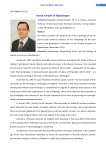
Russia remains on Shpitsbergen
Статья научная
The article considers the perspectives of the expanding of the national social-economic activities on the archipelago by the decisions of the government committee on the Russian presence on Shpitsbergen (December 2011).
Бесплатно


